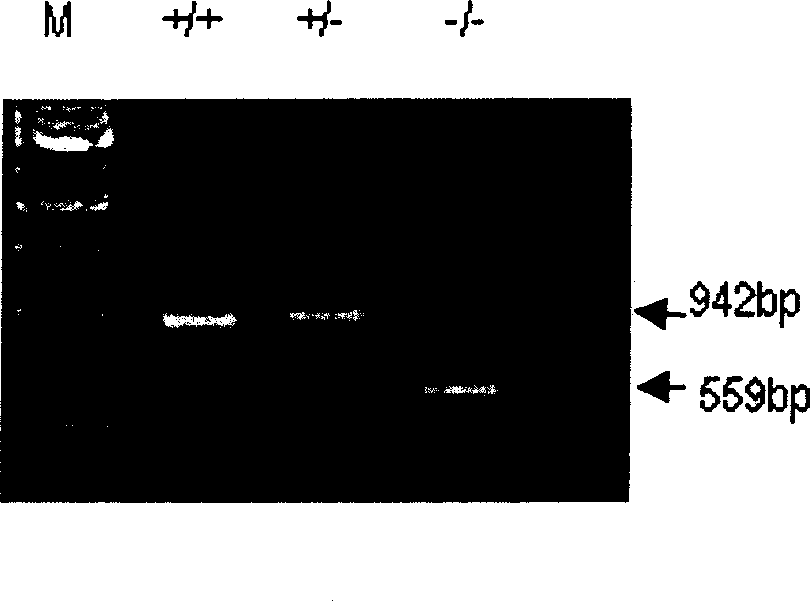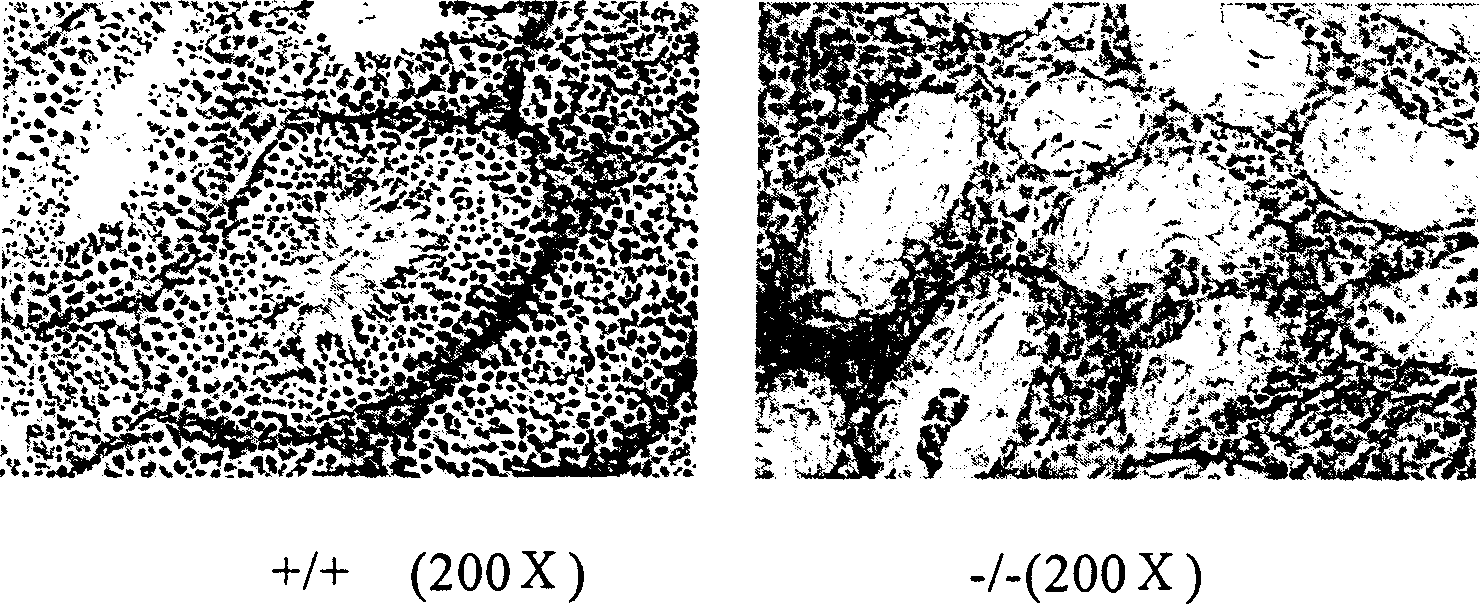Method for generating model of mice in male sterility
A male sterile, mouse technology, applied in the field of transgenic technology, can solve the problems of spermatogonial stem cell apoptosis, unsatisfactory animal models, and lack of blood stem cell apoptosis.
- Summary
- Abstract
- Description
- Claims
- Application Information
AI Technical Summary
Problems solved by technology
Method used
Image
Examples
Embodiment 1
[0054] PLAG1-EGFP transgenic plasmid construction
[0055] About 100 mg of mouse tumor tissue or placenta tissue was used to extract total RNA according to the instructions of Trizol reagent (Gibico Company), and reverse transcription was performed with AMV standard RT-PCR kit of TaKaRa Company. PCR primers were designed based on the GenBack U65002 sequence as a template, and the following primers were used:
[0056] Primer 1 (381): 5'-TTACGACACCATGAAACTTGAG-3' (SEQ ID NO: 1)
[0057] Primer 2 (2003): 5'-TGAATCCATGTCCCAGAATCCT-3' (SEQ ID NO: 2)
[0058] A 1623bp nucleotide product containing the complete coding frame of PLAG1 and more than 100 bases before the start codon was amplified by PCR, and cloned into the pGEM-Teasy vector (purchased from Clontech Company) to obtain the pGEM-PLAG1 plasmid.
[0059] After no mismatch was confirmed by sequencing, the fragment was excised from the pGEM-PLAG1 plasmid by EcoR1 digestion, inserted into the EcoRI site of the pCMV-EGFP vecto...
Embodiment 2
[0061] Preparation of transgenic mice
[0062] The pCMV-EGFP / PLAG1 plasmid was digested with NsiI, and a 3.8 kb DNA fragment was recovered for microinjection.
[0063] 6-7 weeks old C57BL / 6J×CBA F1 female mice were taken, and fertilized eggs were collected after superovulation. The 3.8kb DNA fragment was injected into the male pronucleus of the fertilized egg through micromanipulation, and then the injected fertilized egg was implanted into one side of the fallopian tube of the pseudopregnant mouse. After 3 weeks of pregnancy, 10 transgenic mice were obtained.
[0064] Primer
Embodiment 3
[0066] Transgene Mapping by Genome Sequencing
[0067] For the 8 transgenic mouse lines obtained in Example 2, the tails were cut to extract DNA. After using Sau3AI to digest the mouse genomic DNA, add linkers at both ends, connect with DNA ligase, use primers based on the known sequences at both ends of the pGEM-Teasy vector (purchased from Clontech Company) and primers based on the sequences of the linkers at both ends Paired for PCR amplification, the PCR amplification products were ligated and cloned into the pGEM-Teasy vector, sequenced, and the adjacent genome sequence inserted with the transgene was obtained.
[0068] Sequencing results showed that the 5′-end contiguous sequence of the EGFP / PLAG1 insert fragment was as follows:
[0069] gctcccggcc gccatggcgg ccgcgggaat tcgattcaat aggggggcgta cttggcatat 60
[0070] gatacacttg atgtactgcc aagtgggcag tttaccgtaa atactccacc cattgacgtc 120
[0071] aatggaaagt ccctattggc gttactatgg gagcatacgt cattattggc gtcaatgggc 180
[00...
PUM
 Login to View More
Login to View More Abstract
Description
Claims
Application Information
 Login to View More
Login to View More - R&D
- Intellectual Property
- Life Sciences
- Materials
- Tech Scout
- Unparalleled Data Quality
- Higher Quality Content
- 60% Fewer Hallucinations
Browse by: Latest US Patents, China's latest patents, Technical Efficacy Thesaurus, Application Domain, Technology Topic, Popular Technical Reports.
© 2025 PatSnap. All rights reserved.Legal|Privacy policy|Modern Slavery Act Transparency Statement|Sitemap|About US| Contact US: help@patsnap.com



